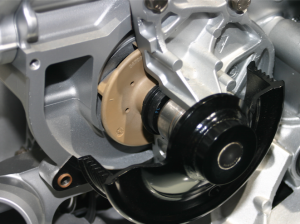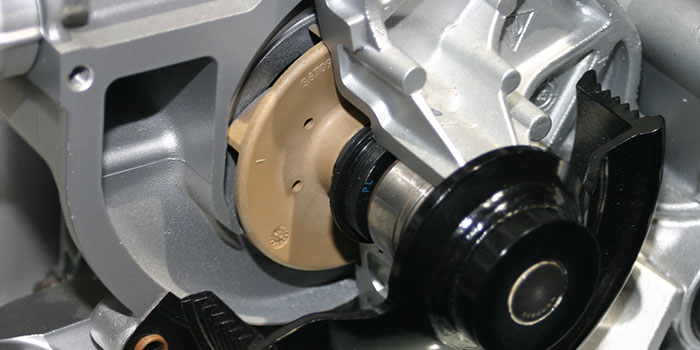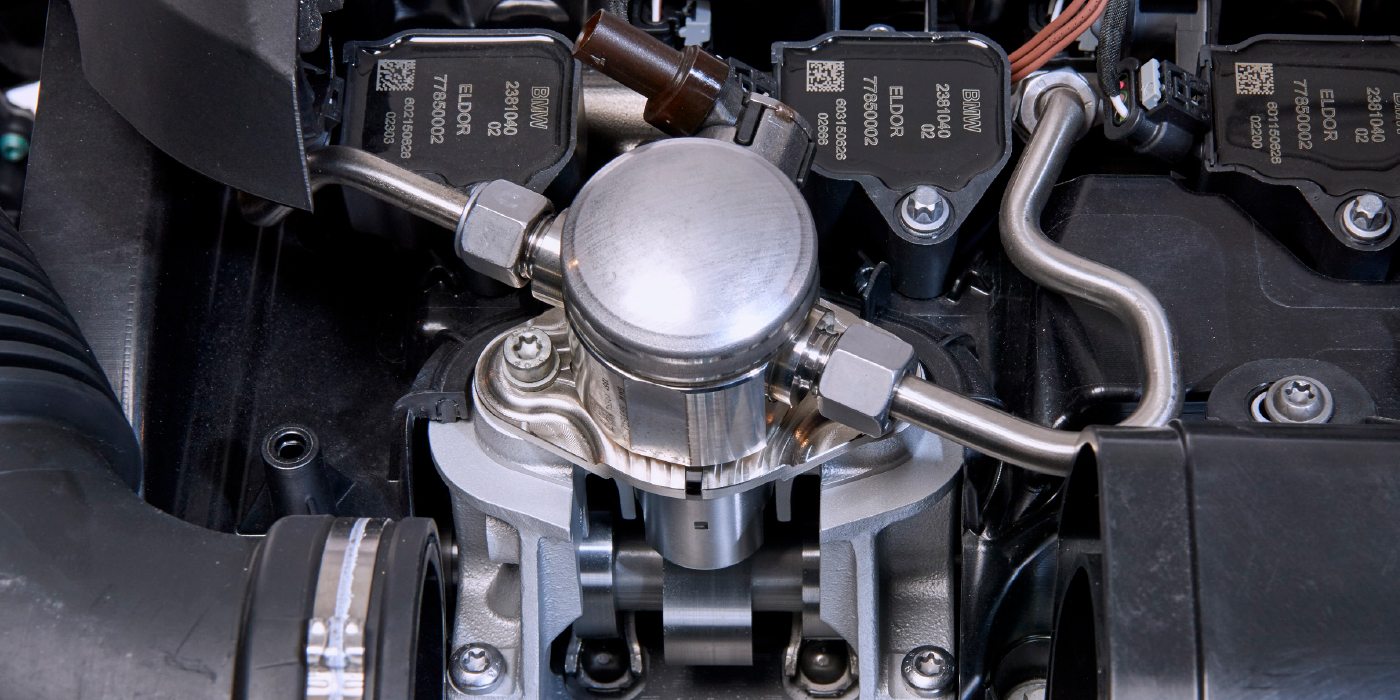 The service life of most original equipment water pumps should be 100,000 miles or longer. Some cheap replacement water pumps, however, may not last 30,000 miles before they start to leak. That’s why you should recommend a top-quality replacement water pump if a customer’s old water pump has called it quits. Several factors can shorten the life of any water pump. These include internal corrosion in the cooling system (old neglected coolant that is worn out and should have been changed), as well as cavitation wear (which can be a problem with some water pumps that have plastic impellers). The pump shaft is supported by bearings, and there is usually a ceramic seal around the shaft. Antifreeze contains lubricants for the shaft bearing, as well as corrosion inhibitors to prevent internal rust and corrosion.
The service life of most original equipment water pumps should be 100,000 miles or longer. Some cheap replacement water pumps, however, may not last 30,000 miles before they start to leak. That’s why you should recommend a top-quality replacement water pump if a customer’s old water pump has called it quits. Several factors can shorten the life of any water pump. These include internal corrosion in the cooling system (old neglected coolant that is worn out and should have been changed), as well as cavitation wear (which can be a problem with some water pumps that have plastic impellers). The pump shaft is supported by bearings, and there is usually a ceramic seal around the shaft. Antifreeze contains lubricants for the shaft bearing, as well as corrosion inhibitors to prevent internal rust and corrosion.
But these additives eventually wear out over time. If the coolant is worn out or dirty, it will shorten the life of the water pump’s bearings and seals, as well as other cooling system components. A water pump with bad bearings may make noise and/or wobble as it turns. There should be no play or movement in the pump shaft if the pump pulley is wiggled sideways by hand when the engine is off. Coolant leaking out of the vent hole on the housing means the shaft seal has failed and the pump needs to be replaced. If an engine has been overheating, but the coolant level is full and there are no signs of coolant leaks externally or internally (such as a bad head gasket), the problem may be the water pump impeller.
Steel impellers can rust or even separate from the shaft. Plastic impellers can erode and wear down, reducing the pump’s ability to circulate coolant. Either way, a pump that isn’t pumping very well needs to be replaced. Other items a customer may need when changing a water pump include gaskets, coolant, a thermostat (recommended if the engine has overheated), and a new OHC timing belt or serpentine belt if the engine has a lot of miles on it and the water pump is driven by the timing belt or serpentine belt. All the hoses in the cooling system also should be inspected and replaced if more than 10 years old.














